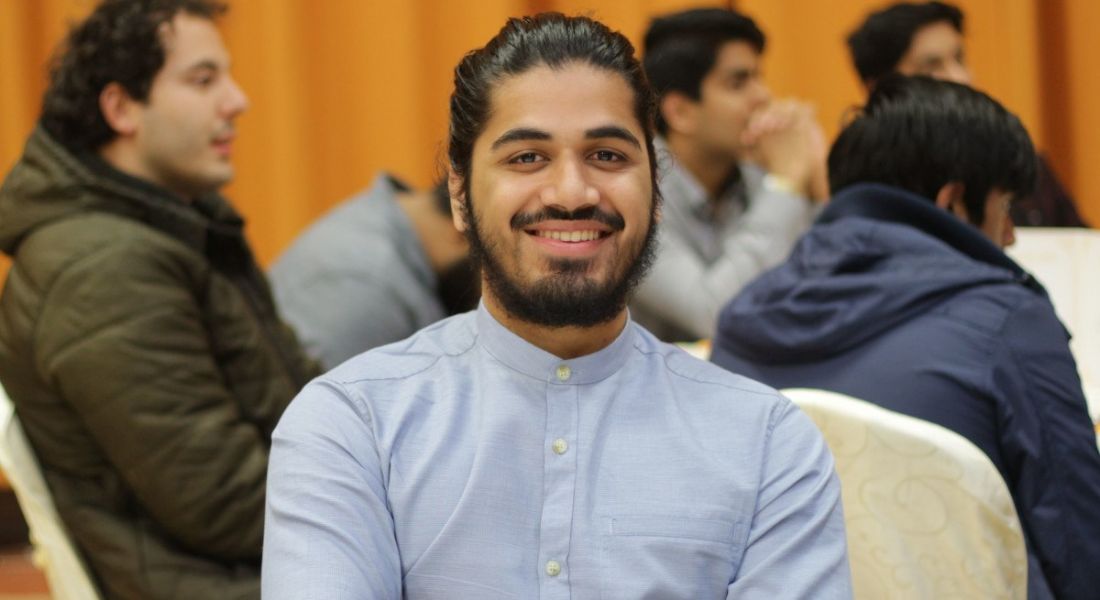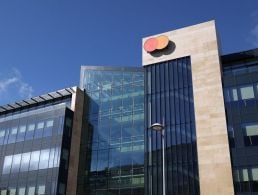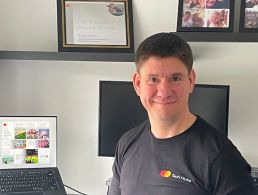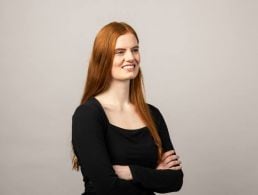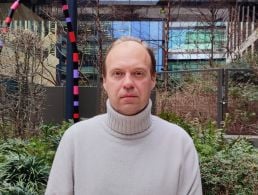Mastercard’s Uzair Qureshi discusses the exciting elements of his role, such as helping to design and build the company’s carbon calculator.
Software engineer Uzair Qureshi has lived in several places, including Mexico, Turkmenistan and Pakistan. He now lives in Ireland and works at Mastercard Foundry, the innovation arm of payments giant Mastercard.
He told SiliconRepublic.com his role is always exciting because of the emerging technologies he gets to work on, from new payment flows to quantum computing.
‘If you don’t keep moving forward, you will stand still’
– UZAIR QURESHI
If there is such a thing, can you describe a typical day in the job?
Since returning to Mastercard Foundry following my internship in 2019, my routine has been drastically different due to us all working from home. The first thing I do in the morning is head to the gym as I find working out sets me up for the day.
After my workout, I start my daily activities by preparing for upcoming meetings. I look forward to my team catch-up over coffee around 10am in the place of the typical office kitchen chats.
We follow an agile project management flow using Jira, with a daily stand-up on Microsoft Teams, which allows the team to collaborate and discuss any blockers or issues. Then, for the rest of the day, we work on our delegated tasks.
Apart from the assigned tasks, Mastercard encourages upskilling and allows time to learn new technologies through our internal learning platform. We are also encouraged to collaborate with other teams across the organisation, typically through interdisciplinary learning groups, where new ideas are shared and discussed.
I personally keep up to date with the knowledge graph group where we discuss the latest graph technologies and products used in Mastercard.
My day ends around 5pm or 6pm when I start to unwind for the evening and meet with friends or colleagues.
What types of engineering projects do you work on?
In Foundry, we de-risk the development and execution of new products and services. We work on various emerging technologies, so projects and sectors change quite rapidly, from new payment flows to quantum computing, which keeps work exciting and fun.
The most interesting project I’ve worked on to date is the Mastercard carbon calculator. As part of our Priceless Planet initiative, the project was introduced to our team as a concept and it was our job to build, test and deploy it for an internal pilot programme within a few months.
The application integrated several of our APIs to build a solution to enable cardholders to gain insight into the effect their day-to-day spending has on the planet. This project went from design to internal market testing with the help of our internal product engineering platform called Forge.
Forge is transforming the developer experience in Mastercard by providing a self-service, cloud-based infrastructure and automated software development life cycle (SDLC).
In addition, Forge uses the latest DevOps tools and automation to empower teams to move fast through the SDLC with confidence. This is important when testing new products with customers like we did with the carbon calculator.
My team worked on the Forge internal developer documentation website, using GatsbyJs with React. It was an exciting challenge for me to build a performant documentation site fit for purpose.
Which engineering skills do you use daily?
As a full-stack engineer, understanding all tiers of an application, back-end, front-end and database, is crucial. My daily job requires taking a business problem and mapping out how the software components should fit together architecturally.
I use Spring Boot (Java) for back-end services and Angular/React for front-end UI. Technology stacks evolve and change over time, so understanding the core principles of the stacks will always pay dividends.
There will always be new things to learn at Mastercard, so you will need to draw on unexpected skillsets. It’s important to adapt to new ideas and challenges.
What are the hardest parts of engineering?
The hardest part of engineering is keeping up with a consistently evolving field. Research and development has been at its peak due to collaborative efforts from the global community. Products and technology are innovating at a fast pace, and our job is to incorporate and implement better, innovative customer experiences.
Keeping a schedule to upskill yourself within different fields consistently is very important. If you don’t keep moving forward, you will stand still.
Do you have any productivity tips that help you through the day?
I have enjoyed using an app called Centered to help set up my daily workflow. It’s a timed to-do list, where you can add tasks against a time limit, so you get a better overview of how long small tasks take to complete throughout the day.
Besides that, automating your recurrent tasks adds a lot of value, such as quick Git commands scripts, quick links to tools, Vim, etc. The Forge platform has a command-line interface to help us spin up and update our applications, allowing us to quickly see our changes from desktop to the cloud environments.
Which skills and tools are you using to communicate daily with your colleagues?
We use both text and video channels to communicate with our colleagues throughout the day, including Microsoft Teams, Zoom and Outlook. We maintain a lot of group text channels, where questions can be asked guilt-free and a swift reply is always available.
We like to keep an open-door policy, where anyone is free to ping each other at any time. This helps resolve issues quicker as you don’t have to consistently slot in video chats to already busy diaries to ask non-pressing questions and the person is able to reply at their own pace. When more dialogue is required, we can easily start video chats and screen share.
How has this role changed as the engineering sector has grown and evolved?
As the engineering sector has grown, the role has become very segmented. Additional roles have been created under the same umbrella to allow for specialisation in a specific field.
This is due to technology continuously evolving and improving. Paths under engineering have diverged significantly and must be chosen to allow more focus time.
For example, you have a blockchain engineer and a cloud engineer both applying knowledge differently. I studied computer and electronic engineering, however I’ve ended up focusing more on computer engineering towards the end. So, an engineer must be a jack of all trades and aim to master one.
Mastercard uses a lot of the latest tools and technologies, so I’m fortunate that I can keep up to date in my role and also have the opportunity to introduce new technologies such as graph databases, which I suggested for my latest project.
What do you enjoy most about working as an engineer?
I love the problem-solving aspect. The challenge to solve interesting, real-world problems that have yet to be worked out and always finding ‘gotchas’ pushing you to reassess your solutions.
Inventing, designing and testing complex systems to fulfil objectives keeps the workday exciting.
What advice would you give to someone who wants to work in engineering?
I would recommend focusing on understanding abstracts of many fields in engineering. This provides a better understanding of how different components can be used to solve an issue rather than being a one-trick pony.
Don’t miss out on the knowledge you need to succeed. Sign up for the Daily Brief, Silicon Republic’s digest of need-to-know sci-tech news.
